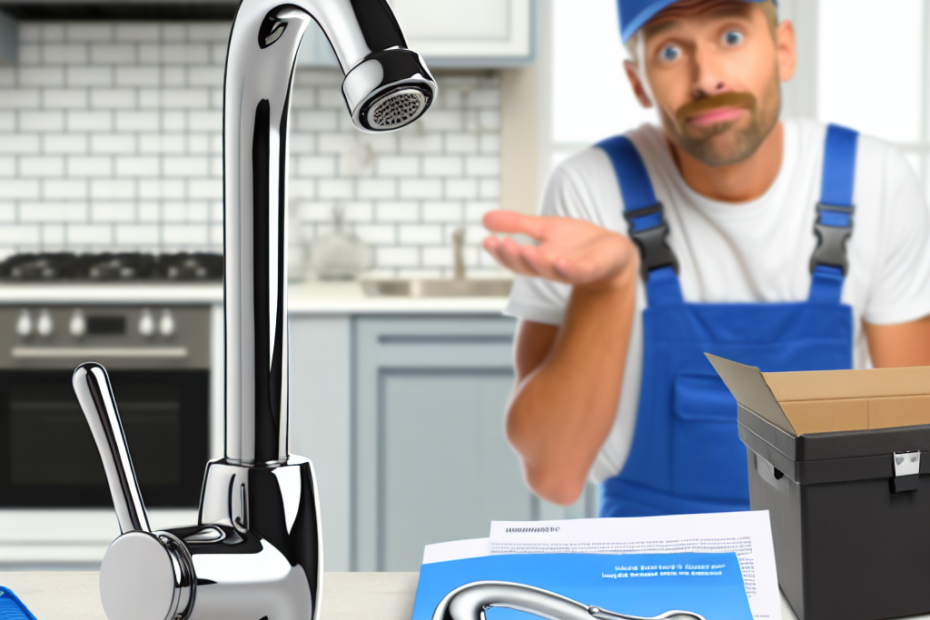Understanding Kitchen Faucet Cartridges: Functions and Importance
When thinking about a kitchen faucet, most people picture something that simply dispenses water. However, the reality is much more complex, especially when it comes to the inner workings of a kitchen faucet cartridge. This article dives deep into what a kitchen faucet cartridge does, how it works, and why it’s an important component of any kitchen faucet.
What is a Kitchen Faucet Cartridge?
At the core of any kitchen faucet system lies a faucet cartridge. This small yet crucial component regulates the flow and temperature of water. Simply put, a cartridge controls how water comes out of the faucet and at what temperature.
Types of Kitchen Faucet Cartridges
Before getting further into the details, it’s worth noting that there are several types of kitchen faucet cartridges, each with its own unique mechanism. Here’s a brief overview:
| Type | Description |
|---|---|
| Compression Cartridge | Uses rubber washers; requires frequent replacement. |
| Ceramic Disc Cartridge | Durable, provides smooth operation; often used in modern faucets. |
| Ball Cartridge | One piece; controls both water flow and temperature simultaneously. |
| DIY Cartridge | Usually custom-made or adapted; not very common. |
The Role of a Kitchen Faucet Cartridge in Water Flow
The cartridge is primarily responsible for regulating water flow. When you turn the faucet handle, the cartridge reacts to either increase or decrease the flow of water. If you twist the handle clockwise, you engage the internal components of the cartridge to allow more water through, while turning it counterclockwise decreases the water.
How Does It Regulate Temperature?
Another essential function of the kitchen faucet cartridge is to regulate water temperature. Most modern faucets feature a mixing mechanism, allowing both hot and cold water to blend together. The cartridge has ports that either allow hot or cold water through—based on how the handle is turned.
Common Problems and Solutions Related to Faucet Cartridges
Just like any other part of your plumbing system, kitchen faucet cartridges can encounter problems. Below are some common issues and their respective solutions.
| Problem | Description | Solution |
|---|---|---|
| Leaking Faucet | Water drips or leaks from the faucet. | Replace the cartridge. |
| No Water Flow | Faucet doesn’t release water. | Check for clogs or replace the cartridge. |
| Hard to Turn Handle | Difficulty turning the faucet handle. | Lubricate or replace the cartridge. |
| Inconsistent Temperature | Water temperature fluctuates unexpectedly. | Check for a malfunctioning cartridge. |
How to Replace a Kitchen Faucet Cartridge
Knowing how to replace a faulty cartridge can save you time and money. Here’s a step-by-step guide:
- Preparation: First, turn off the water supply.
- Remove the Faucet Handle: Look for a small screw under the handle or a decorative cap that can be popped off.
- Extract the Cartridge: Pull the cartridge out carefully. Depending on the type, you may need pliers or a cartridge puller.
- Install New Cartridge: Insert the new cartridge, aligning it correctly.
- Reassemble the Faucet: Put the handle back on, turn on the water supply, and check for leaks.
Selecting the Right Cartridge for Your Faucet
Selecting a suitable cartridge for your faucet is also essential. Each faucet brand may have specific types of cartridges. When shopping, be sure to:
- Check the Brand: Most cartridges are brand-specific.
- Examine Physical Dimensions: The size of cartridges can vary significantly, so take measurements if necessary.
- Look for Compatibility: Make sure the cartridge matches the faucet’s specifications based on the model and type.
Advantages of Upgrading to a High-Quality Kitchen Faucet Cartridge
Interestingly, upgrading to a high-quality cartridge can significantly enhance your faucet’s performance. Here are some reasons to consider a switch:
| Benefit | Description |
|---|---|
| Improved Durability | Higher quality materials result in longer life spans. |
| Better Temperature Control | Increased control over water mixing for a consistent experience. |
| Less Frequent Repairs | Reduces the need for ongoing repairs and maintenance. |
Maintenance Tips for Kitchen Faucet Cartridges
Taking good care of your faucet cartridge can save you money and hassle in the long run. Here are some wise tips:
- Regularly Clean the Faucet: Use a soft cloth and mild detergent.
- Check for Mineral Buildup: Hard water can create deposits. Consider using vinegar for cleaning.
- Inspect O-Rings and Seals: Make sure they’re not worn down to avoid leaks.
When to Call a Professional
Although many faucet cartridge issues can be resolved independently, there are times when calling in a professional is necessary. If you encounter:
- Persistent Leaks: Even after cartridge replacement.
- Water Damage: Surrounding areas are wet or show signs of mold.
- Complex Faucet Systems: If your faucet has multiple components that are beyond basic repair.
Conclusion
Kitchen faucet cartridges are pivotal for managing both the flow and temperature of water in your home. Understanding their function and addressing problems promptly can save you from annoying leaks or fluctuating temperatures. Whether you’re considering a replacement, an upgrade, or regular maintenance, knowing this essential component empowers you as a homeowner.
Taking these insights into account will help ensure that your kitchen faucet remains efficient and reliable for years to come.
Remember: A well-functioning faucet isn’t just an appliance; it’s a crucial part of your everyday kitchen experience!
